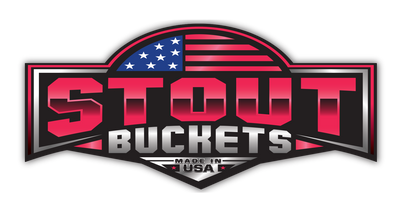Common Hazards of Working With Post-Hole Diggers

Post-hole diggers can save hours of backbreaking labor, whether planting fence posts, installing signposts, or clearing land. However, as useful as they are, augers come with their fair share of risks.
Many of these hazards are completely avoidable if you know what to look for and take preventative measures. Let’s look at the most common hazards when working with post-hole diggers so you can avoid them and stay safe when working with this tool.
Overdue Maintenance
A poorly maintained auger is a potential accident waiting to happen. Unresolved wear and tear often lead to mechanical failures, which can put the operator and nearby workers in harm’s way.
Loose Bolts
Through use and constant vibration, bolts securing key components of the auger can loosen. Loose bolts impact stability and can cause parts to shift or detach during operation. Tighten loose bolts you find before using the auger. A few extra minutes of maintenance can save you from a major accident down the line.
Damaged Parts
Cracked or bent auger blades, warped shafts, and worn teeth are not uncommon, especially on equipment that sees frequent use. Damaged auger components slow down digging speed and can cause the tool to malfunction abruptly. Regularly inspect your auger for damaged parts, replacing worn components for safe operation.
Hydraulic Fluid Levels
For hydraulic-powered augers attached to skid steer buckets, low fluid levels increase the risk of system failure. Hydraulic systems rely on proper lubrication to work efficiently. Low fluid levels lead to overheating and may even cause the equipment to seize up entirely. Always top off hydraulic fluid to the recommended level before starting your project.
Missing Safety Guards
Safety guards exist for a reason. They keep users at a safe distance from moving parts. However, on older or heavily used augers, these guards are sometimes removed or fall off unknowingly. Working without them increases the chance of accidents involving spinning blades or shafts. Make sure all safety guards are secured and intact before operating the auger.
Improper Use
Sometimes, the biggest hazard isn’t the equipment itself but how you use it. Using an auger for projects it isn’t suited for or using one without proper training can quickly lead to disaster.
While post-hole diggers excel at drilling into dirt or soft soils, tasks like breaking through dense rock or frozen ground are best left to specialty tools. Forcing an auger to tackle unsuitable materials creates excessive strain on its motor and blades, leading to damage and accidents. If you’re unsure whether your auger can handle a certain material or project, consult the specifications before you start work.
Lack of Training

Experienced operators know how to adjust for soil conditions, manage speed and depth, and maintain proper positioning during operation. They’re also familiar with vital safety precautions, like locating underground utilities before digging and wearing protective gear.
For anyone new to using an auger, basic training is a must. Take the time to understand the machine’s operation, safety guidelines, and limitations before you use this tool. It’s for your own safety and that of those around you.
Lack of Caution Around the Auger
Even with a well-maintained tool and sufficient training, carelessness can result in unnecessary danger. Augers have powerful spinning parts that you shouldn’t get lax around. Don’t put yourself in harm’s way through a simple lack of caution or concern.
For instance, loose clothing, dangling sleeves, or accessories pose a major hazard when using equipment with spinning parts like augers. It only takes a moment for fabric to get caught in the machinery. To stay safe, always wear fitted clothing, avoid jewelry, and tie back long hair securely.
Direct Contact With Sharp Bits
An auger’s sharp blades can cause severe injuries, even from brief or accidental contact. Operators and anyone nearby should always maintain a safe distance from the moving bits. Never attempt to clear debris or adjust the auger while it’s running. To handle blades safely, power the tool off, disconnect it from its power source, and securely stabilize it.
Running Into Obstacles
Even when operated as intended, the material that your post-hole digger encounters can lead to problems. Some of the most common hazards of working with post-hole diggers are a result of these obstacles. Knowing what to look out for and how to prepare can keep your project on track and ensure your safety.
Buried Utilities
Gas pipes, water mains, and electrical lines often lie just beneath the surface, hidden from plain sight. Striking any of these buried utilities can cause severe injuries, major property damage, or even life-threatening situations. Gas leaks, water flooding, or electrical shocks are just a few potential dangers.
To avoid these risks, always contact your local utilities marking service before starting any digging. This precaution ensures underground lines are properly marked, allowing you to dig safely and avoid costly accidents.
Flying Debris
Post-hole diggers commonly dislodge rocks, roots, and other debris while breaking through the soil. When spinning at high speeds, the equipment can fling this loose material outward with considerable force, posing a serious risk of injury to the operator or nearby individuals. To minimize this hazard, wear safety glasses to protect your eyes. Everyone should maintain a safe distance from the work area.
Dust Particles
Drilling into dry, compacted soil often generates fine dust particles that can quickly become airborne. These particles can irritate your eyes, throat, and lungs, making the experience uncomfortable and potentially hazardous. Prolonged exposure to dust can possibly lead to more serious respiratory issues over time. Protect yourself by wearing a dust mask to prevent inhalation and goggles to shield your eyes from irritation.
Choose the Right Equipment for Safer Operations

Safety should always come first. While the right equipment can’t eliminate every hazard, it plays a key role in safer, more efficient operations. For reliable, durable skid steer augers and other attachments, look no further than Stout Buckets. Our products can withstand the toughest jobs.


